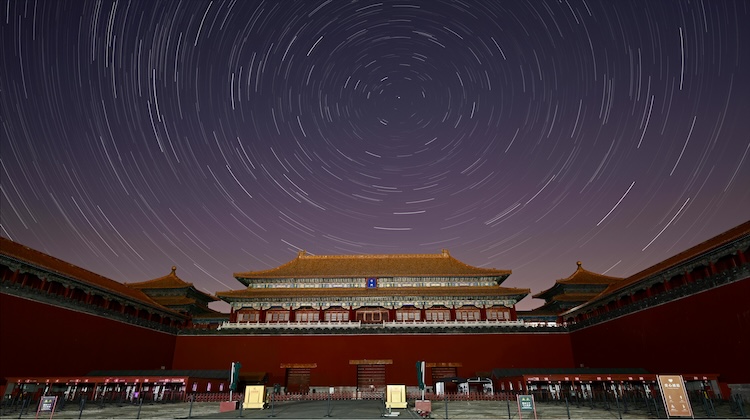Mandarin and Cantonese have become the most internationally recognized forms of Chinese for different reasons. Mandarin is China’s official language — the language of government, education, national media, and public life. Cantonese, on the other hand, gained global visibility thanks to Hong Kong cinema, pop music, and the Cantonese-speaking communities abroad.
The reality is, depending on where you’re standing in China, people might speak something completely different.
Growing Up with Foochow
I was born in Fuzhou, the capital of Fujian province in southeastern China. While Mandarin was my first language, I grew up surrounded by Fuzhouhua (福州话), or Foochow — a branch of the Min language group. It was the language of my nanny, of the street market, of overheard conversations on buses and in neighborhood alleyways. For centuries, Foochow was the main language spoken in Fuzhou and neighboring cities — the everyday tongue of family life, trade, and local governance — until Mandarin was promoted as the national language in the mid-20th century, gradually reshaping the linguistic landscape of the region.
History, Geography and Language
Foochow is not mutually intelligible with Mandarin. With seven tones, its rhythm feels older, more winding — and in fact, it preserves many features of Middle Chinese, the historical language spoken over a thousand years ago. Phonetically and structurally, Foochow has more in common with how Chinese might have sounded during the Tang or Song dynasties. That’s why Tang poetry often rhymes more naturally when read aloud in Foochow.
So why are dialects like Foochow so different from Mandarin? Geography plays a big role. Mandarin is largely spoken in northern China, where flat plains and easier transportation allowed speech to become more uniform over time. Southern China, by contrast, is mountainous and fragmented. Communities historically lived more isolated lives, and their languages evolved separately.

Dialect or Language?
In fact, the term “dialect” can be misleading. From a linguistic perspective, many Chinese “dialects” are so distinct that they function more like separate languages — some are as different from each other as Italian is from Spanish. But in Chinese, they’re all classified under the umbrella of “dialects” (方言, fāngyán), largely for historical and political reasons. By labeling them as dialects rather than separate languages, they were made to appear less distant from Mandarin, which helped promote a sense of unity and made the push for a standardized national language more acceptable to the public.
Here’s a quick overview of the major Chinese language groups:
- Mandarin (Putonghua): Based on the Beijing local language, spoken by the majority across northern China. It’s the standardized version taught in schools and used in media and public life.
- Cantonese (Yue): Spoken in Guangdong, Hong Kong, and Macau, and known for its six tones and rich presence in pop culture, cinema, and overseas communities.
- Wu: Includes Shanghainese and other local languages from the Yangtze River Delta. It’s known for its soft, flowing sounds and deep literary heritage.
- Min: A highly diverse group mostly found in Fujian, Taiwan, and Southeast Asia. Includes Hokkien, Teochew, and Foochow. Even villages just miles apart may speak different versions.
- Hakka (Kejia): Scattered throughout southern China and Southeast Asia. Hakka communities have a strong sense of cultural and linguistic identity.
- Other groups include Xiang, Gan, Jin, Huizhou, and Pinghua — each with its own history, identity, and variations.

Decline and Revival
Sadly, many of these languages are in decline. Most people of my generation in Fuzhou are not fluent in Foochow. In my primary school, speaking Foochow among peers was discouraged — even forbidden. Mandarin was promoted as the proper and educated way to speak.
That said, there is now a small but growing revival. Younger people are becoming more interested in their local languages as a way to reconnect with their heritage. If you’re interested in learning Foochow, I highly recommend checking out my friend’s YouTube channel 真鳥囝福州話學堂 (https://www.youtube.com/@zingzeu_foochow), and this Mandarin–Foochow dictionary (https://www.ydict.net/) is also very helpful!
Let’s Learn Some Foochow!
Here are a few words and phrases to get you started:
- Hello: 汝好 (Nṳ̄ hō̤)
- Good-bye: 再見 (Cái-giéng)
- Thank you: 謝謝 (Siâ-siâ)
- Do you speak Foochow?: 汝會講福州話賣?(Nṳ̄ â̤ gōng Hók-ciŭ-uâ mâ̤?)
- I don’t understand: 我賣會意 (Nguāi mâ̤ huôi-é)
If you’d like to learn more Foochow, feel free to check out my teaching profile — I’d love to share my language and culture with you!
I hope you enjoyed exploring Chinese languages with me. Do you speak any Chinese languages? Share in the comments — I’d love to hear from you!







